How It Works
After absorbing moisture from the air, the water molecules are bound to the polymer chains of filaments. The PrintDry filament dryer uses heat to cause the molecules in the filament to move more vigorously and this weakens and breaks the bond of water molecules from the polymer chains and permits water molecules to move freely. Airflow carries heat to the filament and also carries the freed water molecules away. However, filaments do not dry instantly. They must first be heated to allow the water molecules free movement. Then, there must be sufficient time for the water molecules to defuse to the surface of the filament in order to evaporate. The PrintDry filament dryer is designed based on these drying factors: (1) heat; (2) dew point; (3) drying time; (4) airflow. (click here for the science behind it)
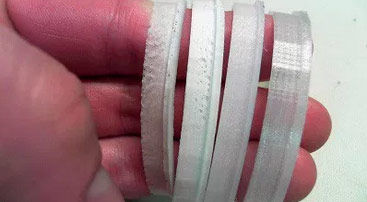
Same filament with different moisture content can make a big difference in the quality of your prints. (pictures from eurekadrytech.com)
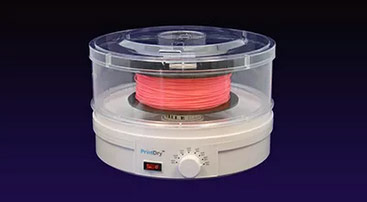
A spool of filament can be dried in a PrintDry filament dryer before 3D printing for storage. The dryer temperature can be set in a range of 35-70°C or 95-160°F.

Relative humidity inside the PrintDry filament dryer can go as low as 10% after 2-hour drying.
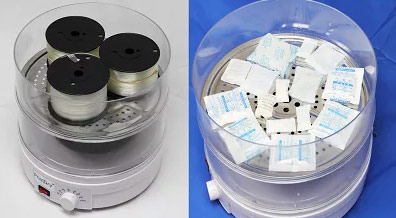
To dry multiple spools of filaments as well as to regenerate desiccant packs are also possible.
Recommended Drying Time
| No. | Materials | Dryer Temp | Drying Time |
|---|---|---|---|
| 1 | PLA | 50°C (122°F) | > 3h |
| 2 | ABS | 65°C (149°F) | > 3h |
| 3 | PETG/CPE | 65°C (149°F) | > 3h |
| 4 | Nylon | 70°C (158°F) | > 12h |
| 5 | Desiccant | 65°C (149°F) | > 3h |
| 6 | PVA | 45°C (113°F) | > 10h |
| 7 | TPU/TPE | 55°C (131°F) | > 4h |
| 8 | ASA | 60°C (140°F) | > 4h |
| 9 | PP | 55°C (131°F) | > 6h |
| 10 | HIPS | 60°C (140°F) | > 4h |
| 11 | PC | 70°C (158°F) | > 6h |
| 12 | PEEK | 70°C (158°F) | > 6h |
These recommendations are made under the following conditions.
* Ambient RH: 50% * Ambient Temp: 20°C (68°F) * 500g (1 lbs) filament spool
Actual filament drying times will vary due to different filament additives, different initial water content levels in filaments and ambient temperature and humidity. In addition to drying prior to 3D printing, drying the filament while printing is always recommended.
Feed+Dry Filaments
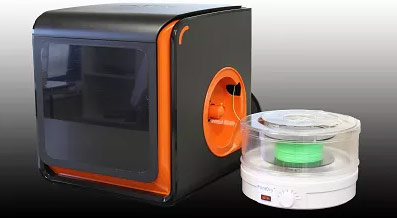
With a special turn-table design, a PrintDry filament dryer can directly feed the 1.75mm or 3mm filament into a 3D printer for 3D printing while drying. The PrintDry filament dryer works with any 3D printers as long as the filament can be fed from outside the printer’s enclosure.
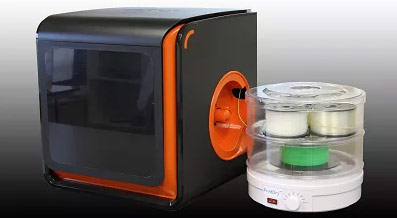
While feeding and drying one spool in the lower compartment of the dryer, additional filament spools and/or desiccants can be dried in the upper compartment while printing.


